Equipment
Scotty Cameron tells the story behind the TeI3 “dots,” and his USGA battle
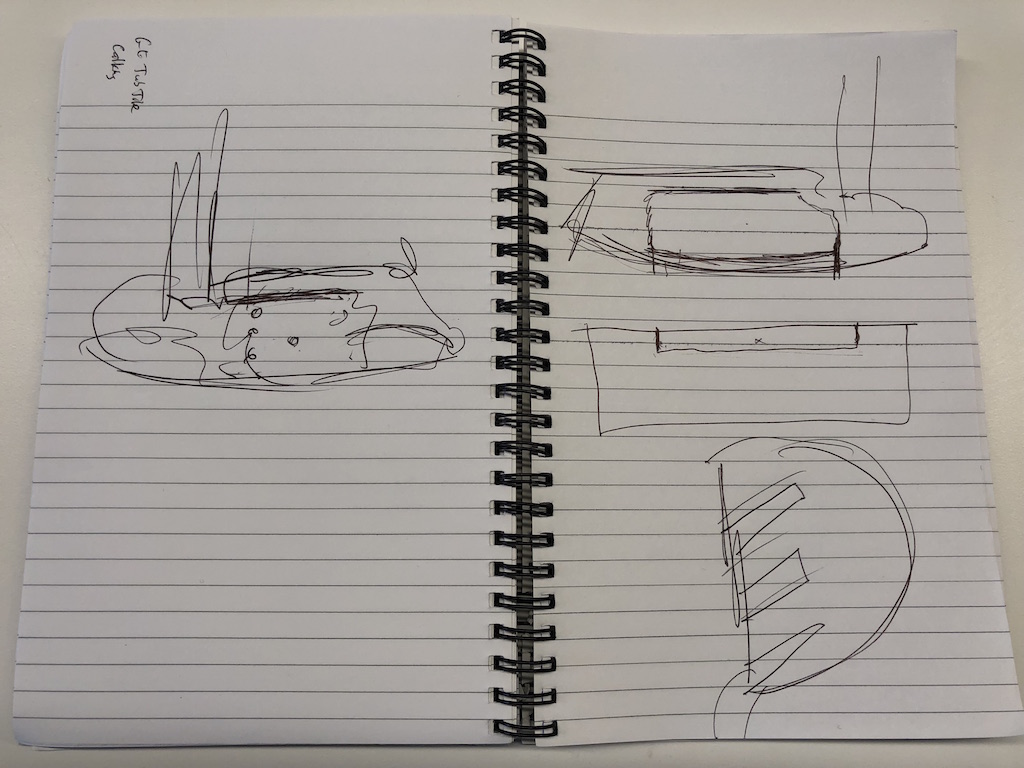
Shortly after the audio stopped rolling on our recent TG2 Podcast with Scotty Cameron, Cameron broke out the pen and pad to explain a few additional stories that were nothing short of fantastic.
He explained the ever-recognizable dots on the back of his Teryllium putters — and how he initially filled them with bathroom caulk — his bout with the USGA over his new wrap-around face inserts, and how swinging an axe in a Home Depot led to the Pistolero grip design.
Below are each of the stories in more depth.
The Caulk Dots
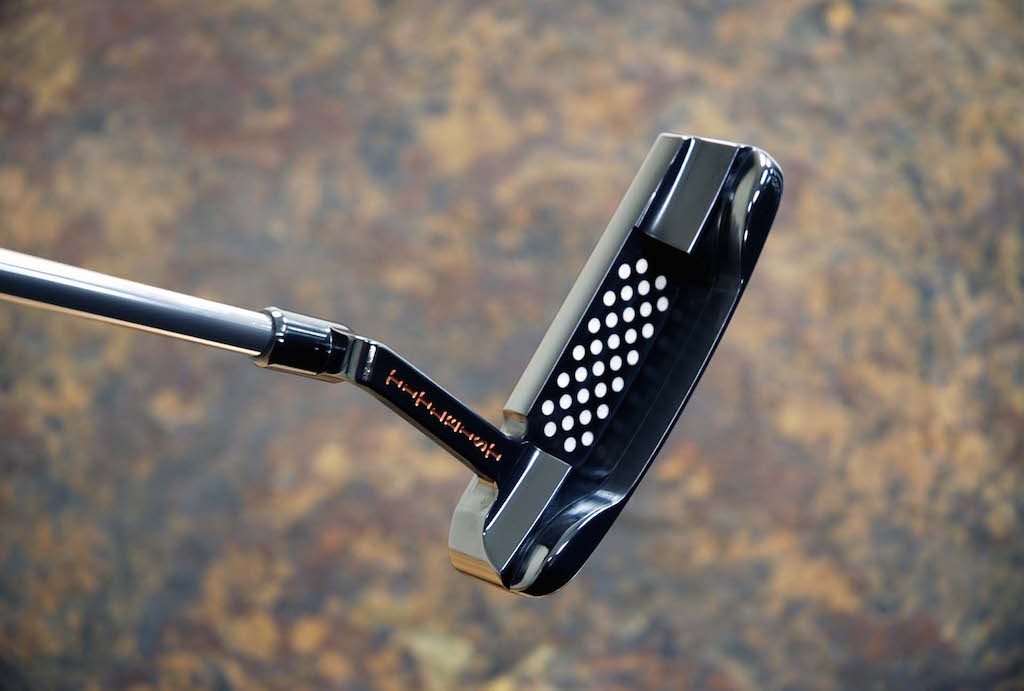
Scotty Cameron’s Teryllium putters were made famous when Tiger Woods won using a Newport 2 TeI3 putter to win the 1997 Masters. The putter is instantly recognizable because of the 32 white dots on the back — Cameron was 32-years old when he designed the putter, thus, the number of dots.
But what you didn’t know, I presume, is that Cameron filled in those dots with caulk that he found at Target while shopping with his daughter.
There were 5 screws in the back cavity of the TeI3 putters; one in each corner, and one right in the center that he used during the milling process. The problem was, the screw in the center was making the putter feel too hard at impact, Cameron said. So he needed something to soften up the feel, and fill in that dot to replace the hole left from the screw. While he was shopping with his daughter at Target, Cameron says he picked up five different types of caulk. After trying each of them out on the putter head — some too soft, some too hard — he found the one that was effective: GE Tub and Tile Silicone caulk.
The company now uses a 3M dampening material made specially for Cameron, but who would have thought the same stuff you would use on your bathroom floor helped make one of the most iconic putters of Tiger Woods’ career?
The USGA battle
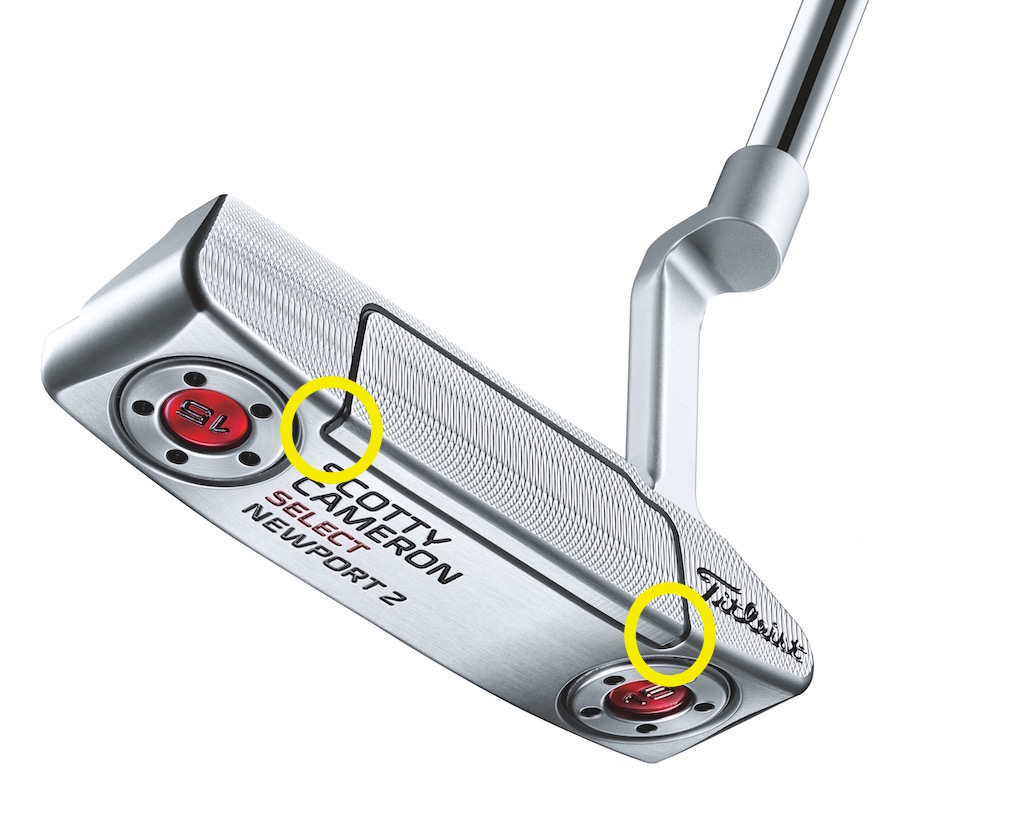
One of the biggest hurdles for golf club makers are the USGA limitations… and some of the rules make more sense than others. Scotty Cameron, after designing and manufacturing his new wrap-around insert that was first introduced in his 2016 Scotty Select line, had a particular issue with the parallel groove rule. As Cameron explains, after he manufactured a warehouse full of putters, the USGA took issue with the fact that the insert extended below the putter face, and left grooves on the sole that sat parallel to the target line. Cameron says the rule is in place to keep from companies putting grooves in the sole of woods and irons to help the golf club remain square through impact; but what effect do parallel grooves really have on a putter, Cameron questioned.
So, with ready-for-retail product sitting in a warehouse and fighting a rule that didn’t make sense to him, Cameron said the lawyers got involved. He didn’t explain what happened from there, but the putters with the inserts that wrap around the face hit retail in 2016.
The Axe
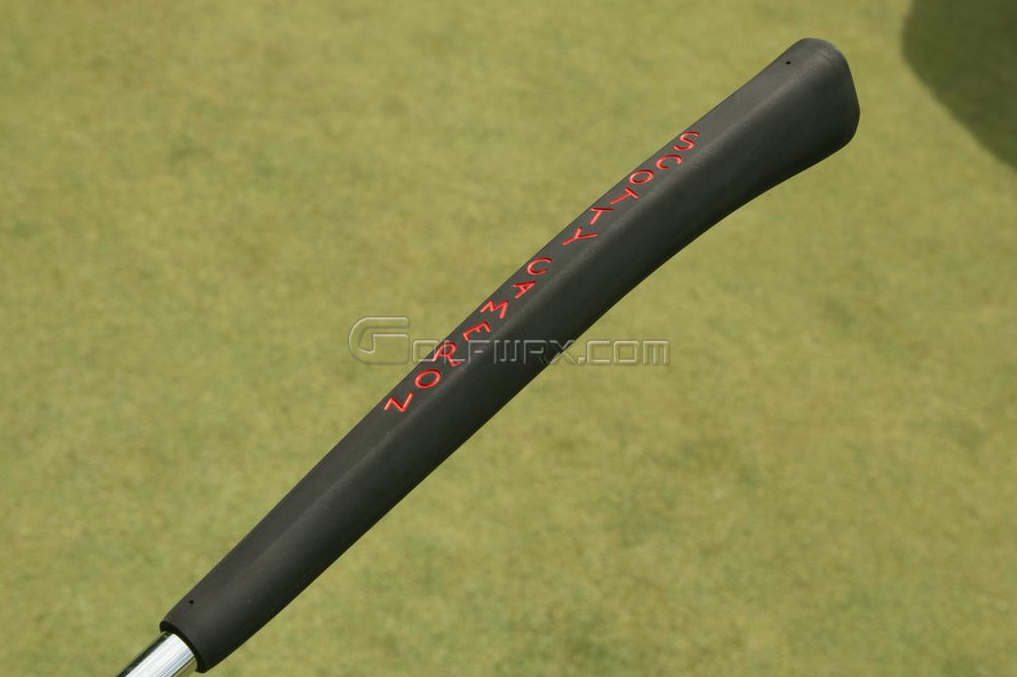
Picture this: You’re walking through Home Depot looking for, well, whatever it is you’re looking for in Home Depot. You turn down one of the aisles, and there’s Scotty Cameron swinging an axe like a golf club.
Yea, this really happened. Cameron says he developed the Pistolero putter grip — with the big knob on the end of it — based on the grip of an axe he found while shopping at Home Depot.
The next time Cameron decides to run some errands, to Home Depot, or maybe to Bed, Bath and Beyond (IDK if there’s gonna be enough time), look out for a new putter design.
- LIKE172
- LEGIT7
- WOW8
- LOL4
- IDHT1
- FLOP6
- OB2
- SHANK21
Whats in the Bag
Ben Kohles WITB 2024 (May)
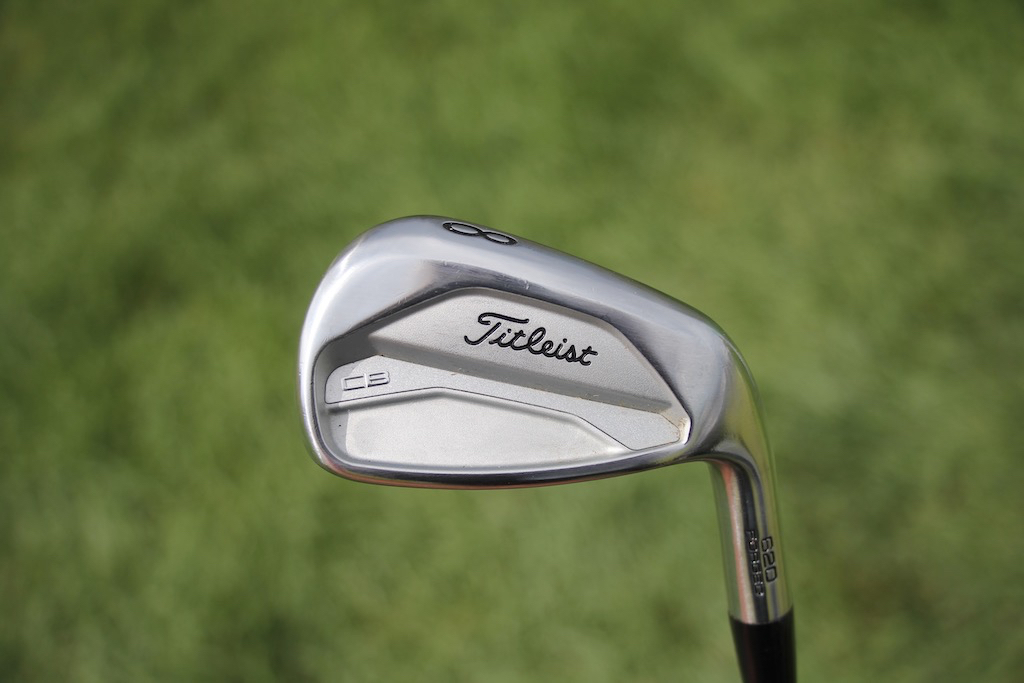
Driver: Titleist TSR3 (9 degrees, D1 SureFit setting)
Shaft: Fujikura Ventus Blue 6 X
3-wood: TaylorMade Stealth Plus (15 degrees)
Shaft: Fujikura Ventus Blue 8 X
Hybrid: Titleist TSR3 (19 degrees, D1 SureFit setting)
Shaft: Fujikura Ventus Blue HB 9 x
Irons: Titleist T200 (4, 5), Titleist 620 CB (6-9)
Shafts: Project X 6.0
Wedges: Titleist Vokey Design SM10 (46-10F, 50-12F, 54-12D, 60)
Shafts: Project X 6.0
Putter: Scotty Cameron P5 prototype
Grips: Golf Pride Tour Velvet
Ball: Titleist Pro V1
- LIKE2
- LEGIT0
- WOW0
- LOL0
- IDHT0
- FLOP0
- OB0
- SHANK0
Whats in the Bag
Kris Kim WITB 2024 (May)

- Kris Kim what’s in the bag accurate as of the CJ Cup Byron Nelson. More photos from the event here.
Driver: TaylorMade Qi10 (9 degrees @7)
Shaft: Mitsubishi Tensei 1K White 60 TX
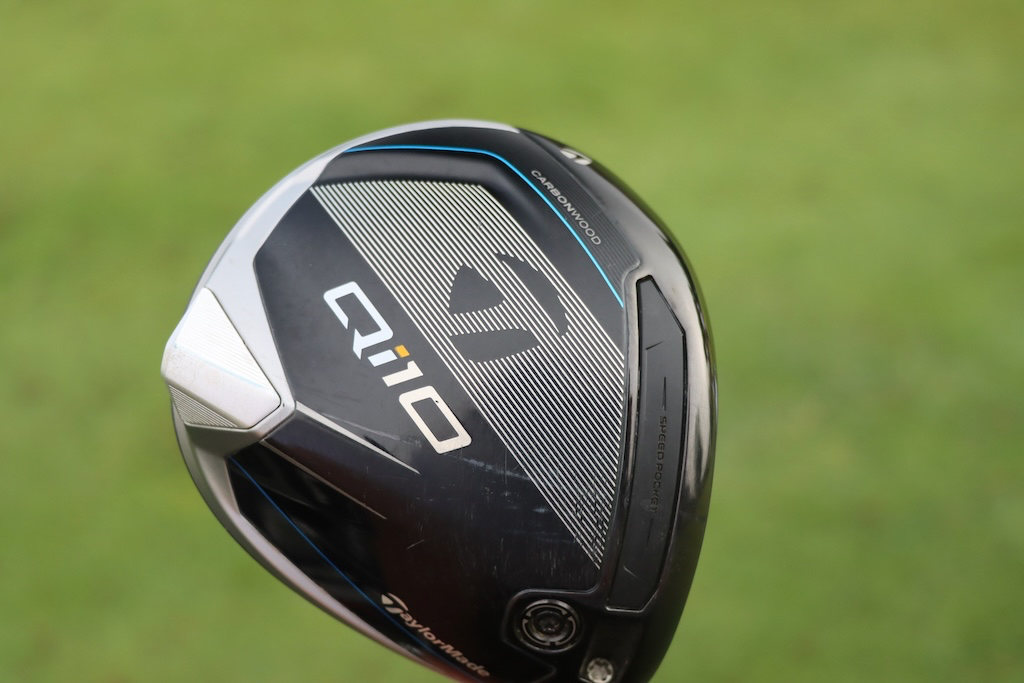

3-wood: TaylorMade Qi10 Tour (15 degrees @13.5)
Shaft: Mitsubishi Diamana WB 73 TX
Irons: TaylorMade P770 (2, 4), TaylorMade P7MB (5-PW)
Shafts: Mitsubishi Tensei 1K White 80 TX (2), Nippon N.S. Pro Modus3 Tour 120 X
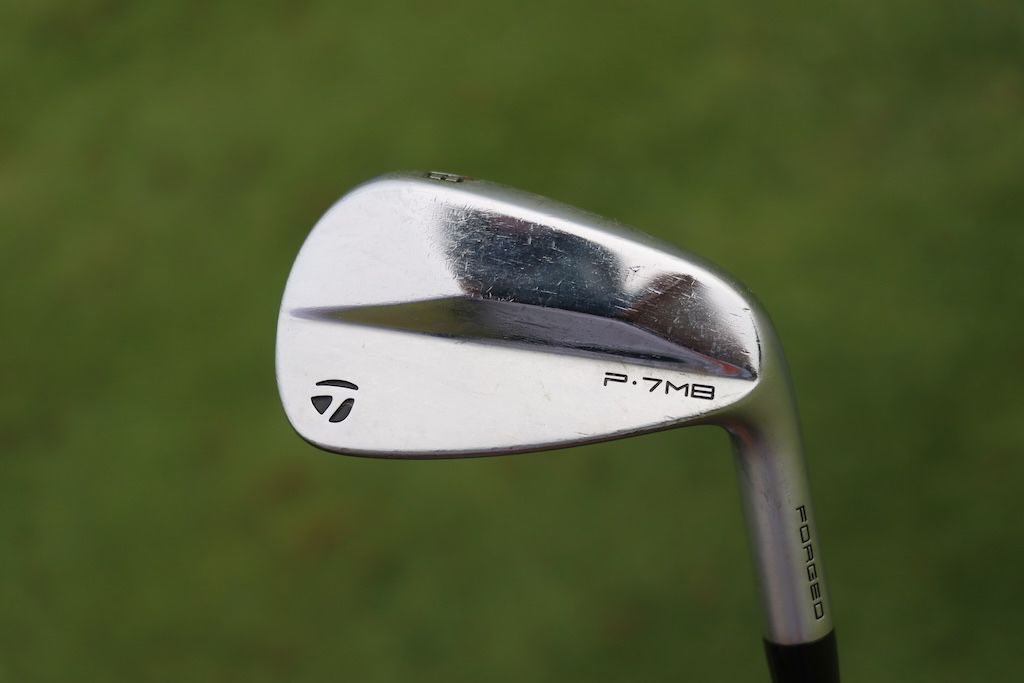

Wedges: TaylorMade MG4 (50-09SB, 56-12SB, 60-11TW)
Shafts: Nippon N.S. Pro Modus3 WV 125
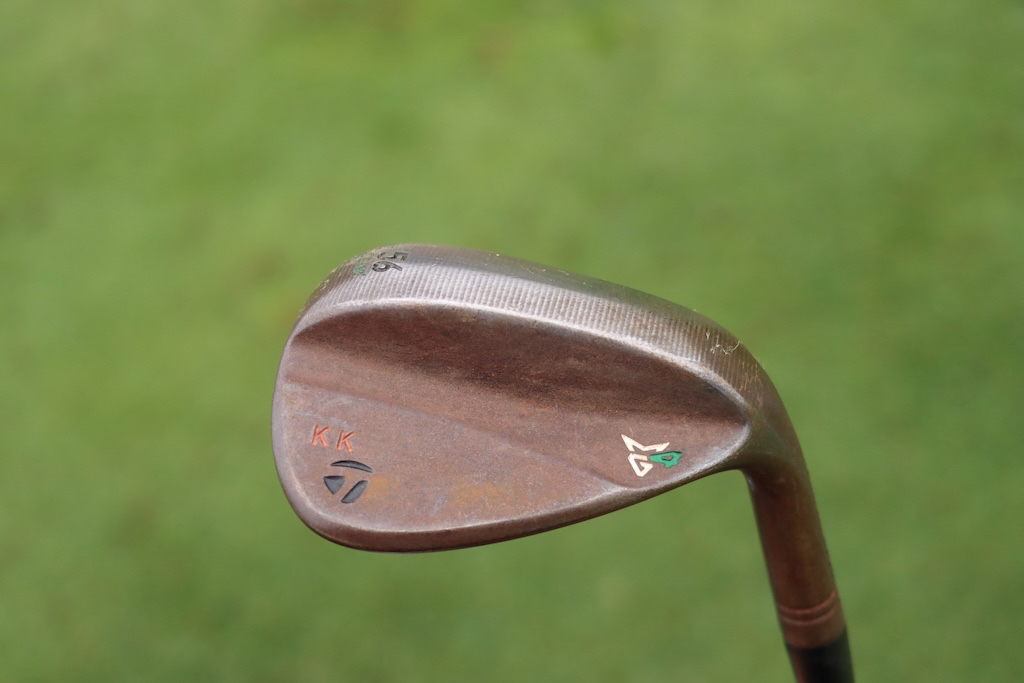

Putter: TaylorMade Spider Tour
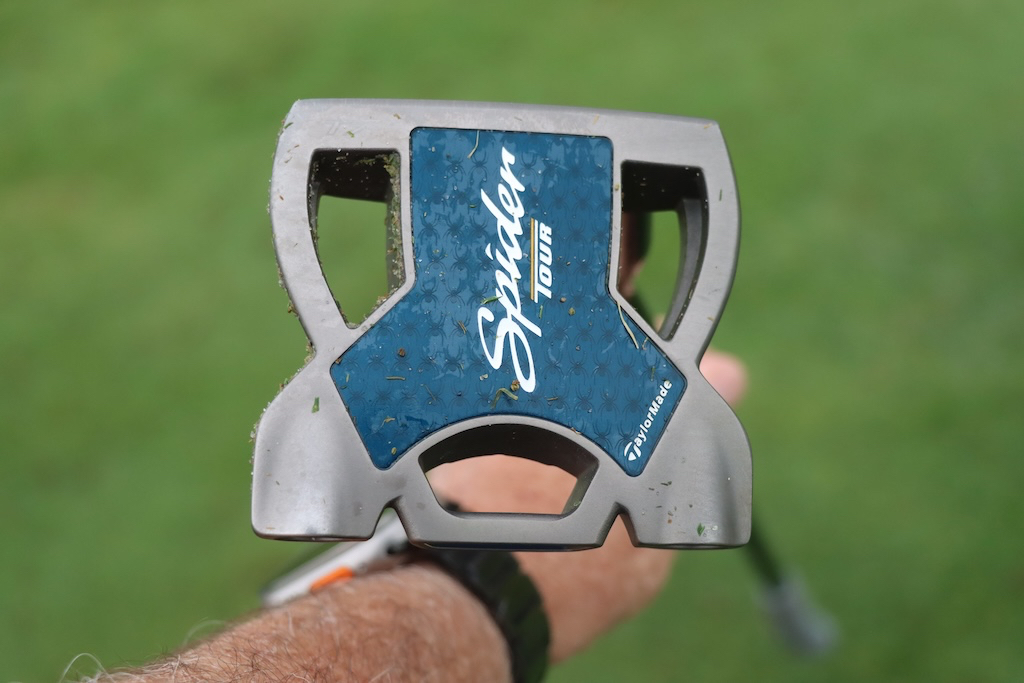
Grips: Golf Pride Tour Velvet Cord
Check out more in-hand photos of Kris Kim’s equipment here.
View this post on Instagram
- LIKE1
- LEGIT0
- WOW0
- LOL0
- IDHT0
- FLOP0
- OB0
- SHANK0
Equipment
Welcome to the family: TaylorMade launches PUDI and PDHY utility irons
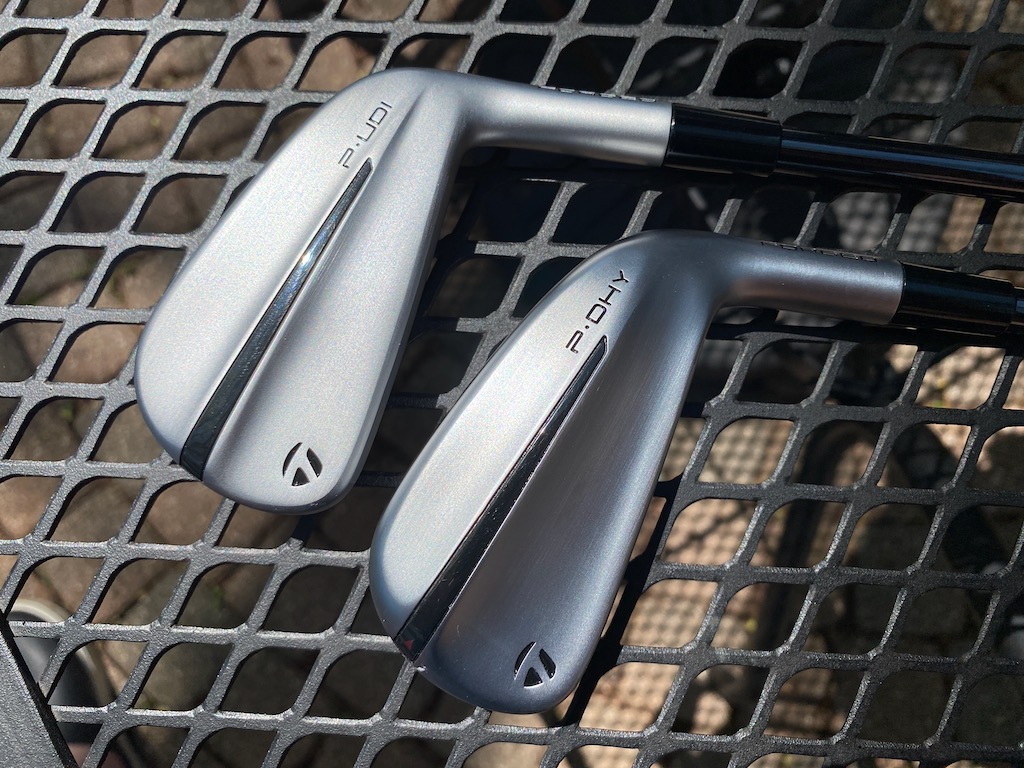
TaylorMade is continuing its UDI/DHY series with the successor to the Stealth UDI and DHY utility irons: PUDI and PDHY (which the company styles as P·UDI and P·DHY). TaylorMade is folding the designs in with its P Series of irons.
TaylorMade outlined the process of developing its new utilities this way. The company started with the data on utility iron usage. Not surprisingly, better players — i.e. those who generate more clubhead speed and strike the ball more precisely — were found to gravitate toward the UDI model. DHY usage, however, covered a wider swath than the company might have expected with six-to-18 handicappers found to be bagging the club.
TaylorMade also found that the majority of golfers playing UDI or DHY utilities were playing P Series irons at the top of their iron configurations.
Can you see where this is going?
Matt Bovee, Director of Product Creation, Iron and Wedge at TaylorMade: “As we look to the future, beyond the tech and the design language, we are excited about repositioning our utility irons into the P·Series family. P·UDI is an easy pair for players that currently play P·Series product and P·DHY is an extremely forgiving option for players of all skill levels. It is a natural fit to give these players the performance in this category that they are looking for.”
View this post on Instagram
TaylorMade PUDI
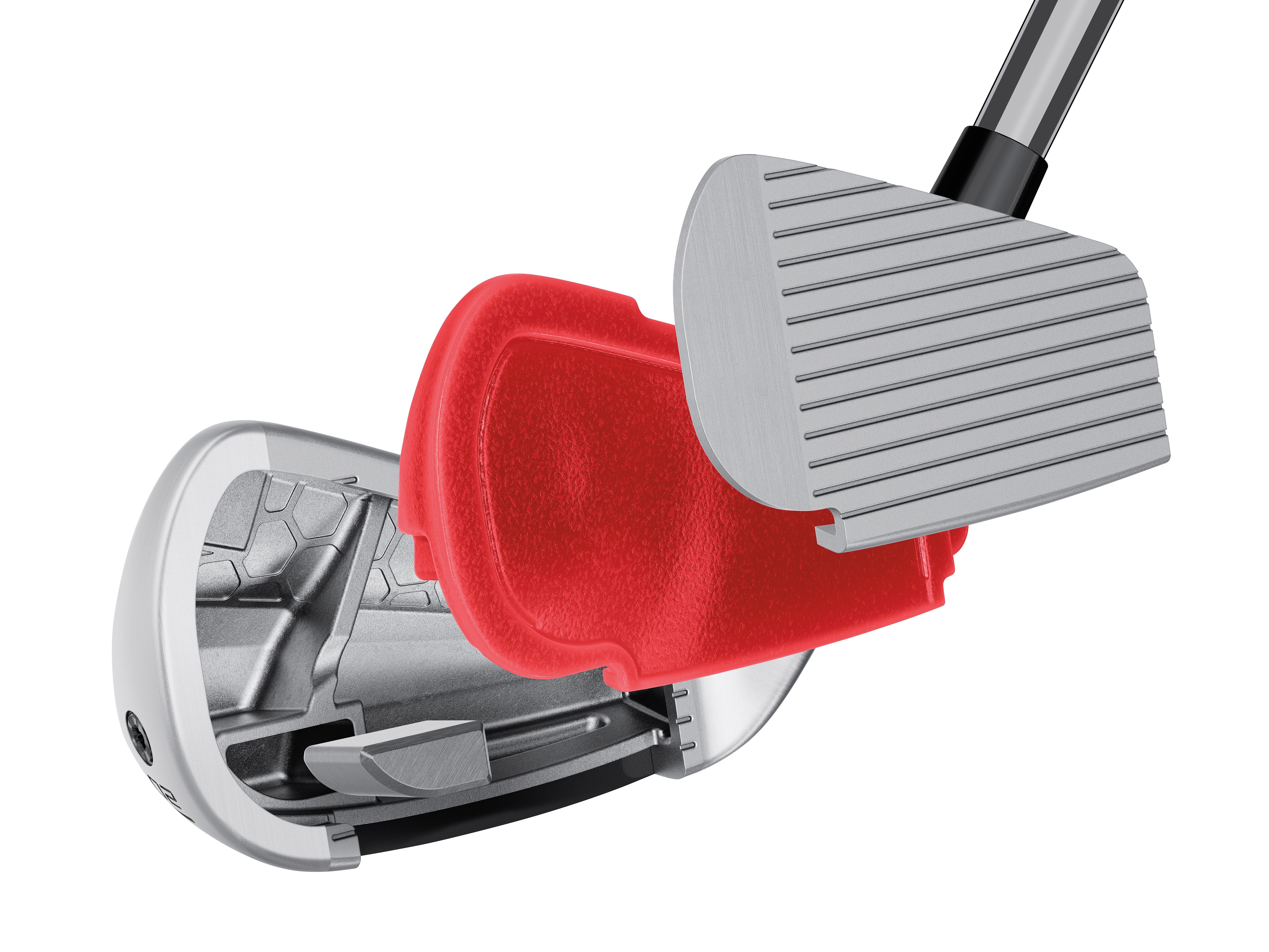
TaylorMade PUDI technology cutaway (via TaylorMade)
Crafted with tour player input, TaylorMade sought to develop a confidence-inspiring utility iron that blends with the rest of the P Series irons. Also of note: Interestingly, the PUDI has a more compact head than the P790.
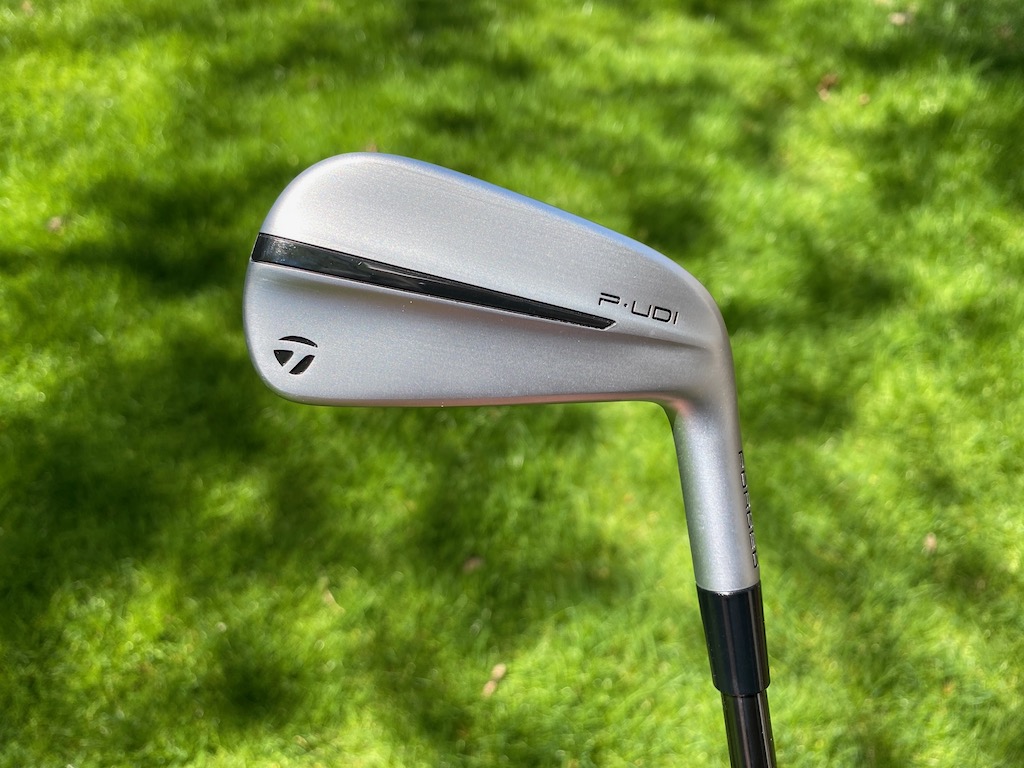
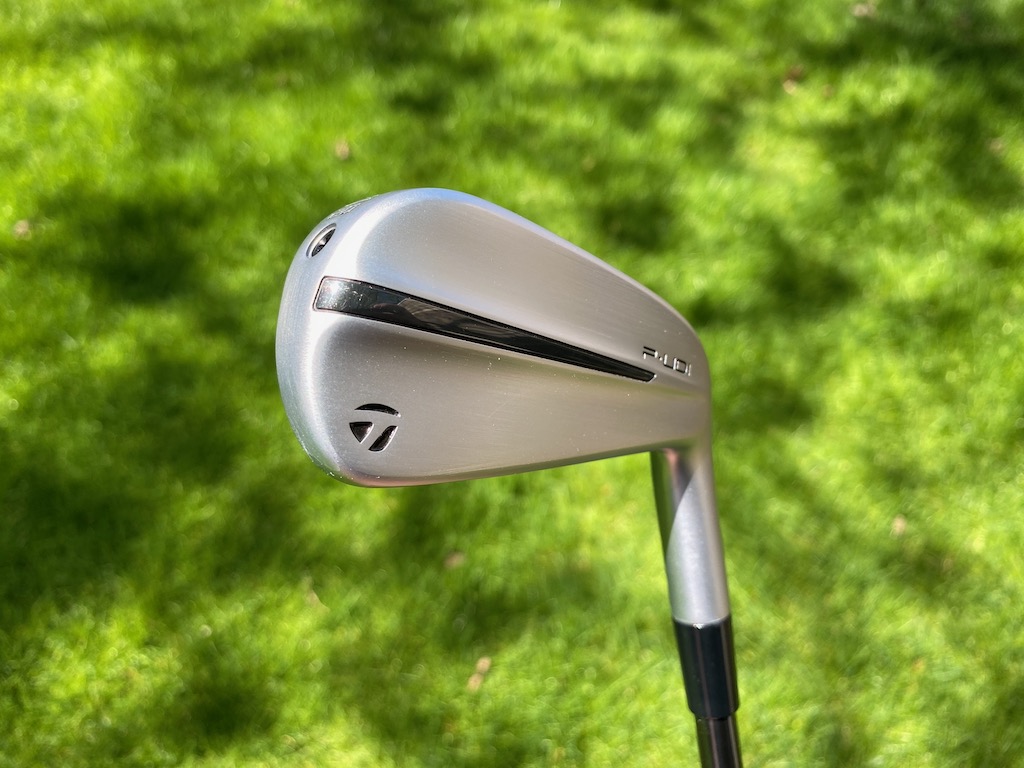
In comparison to past UDI products, the PUDI has a more traditional iron shape, slimmer toplines, and less offset with a little of the backbar visible at address.
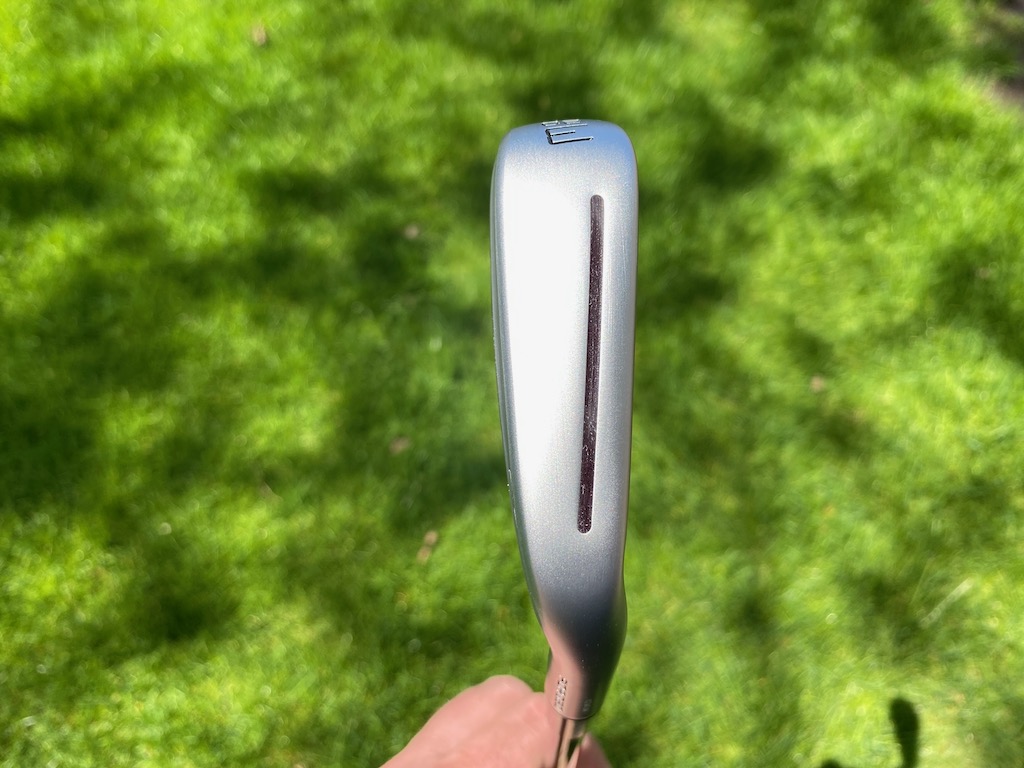

TaylorMade PDHY
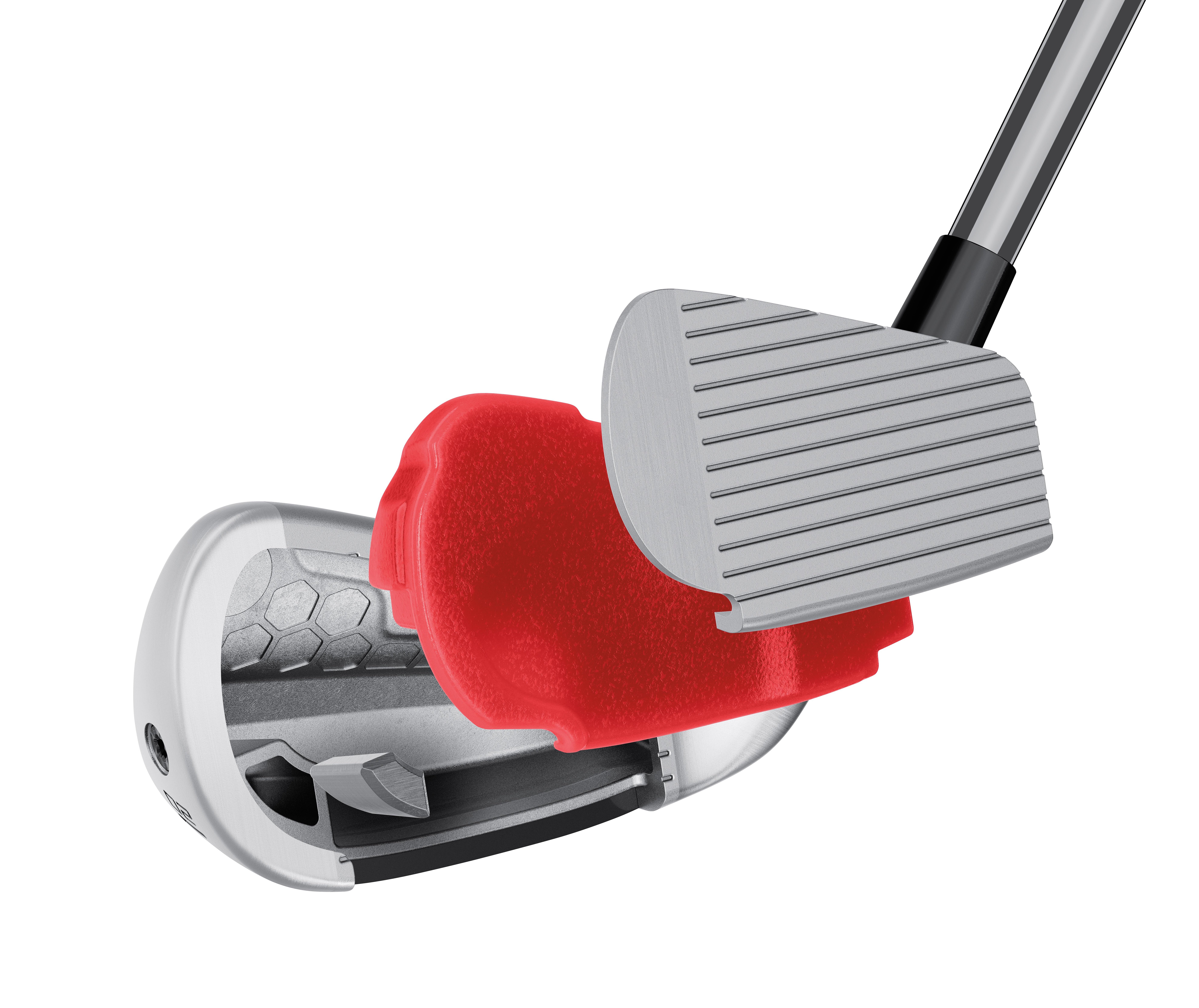
TaylorMade PDHY tech cutaway (via TaylorMade).
Larger in profile than the PUDI, the PDHY seeks to position center of gravity (CG) lower in the club for ease of launch. The toe height is larger and the profile is larger at address — roughly five millimeters longer than PUDI — the sole of the club is wider for improved forgiveness.
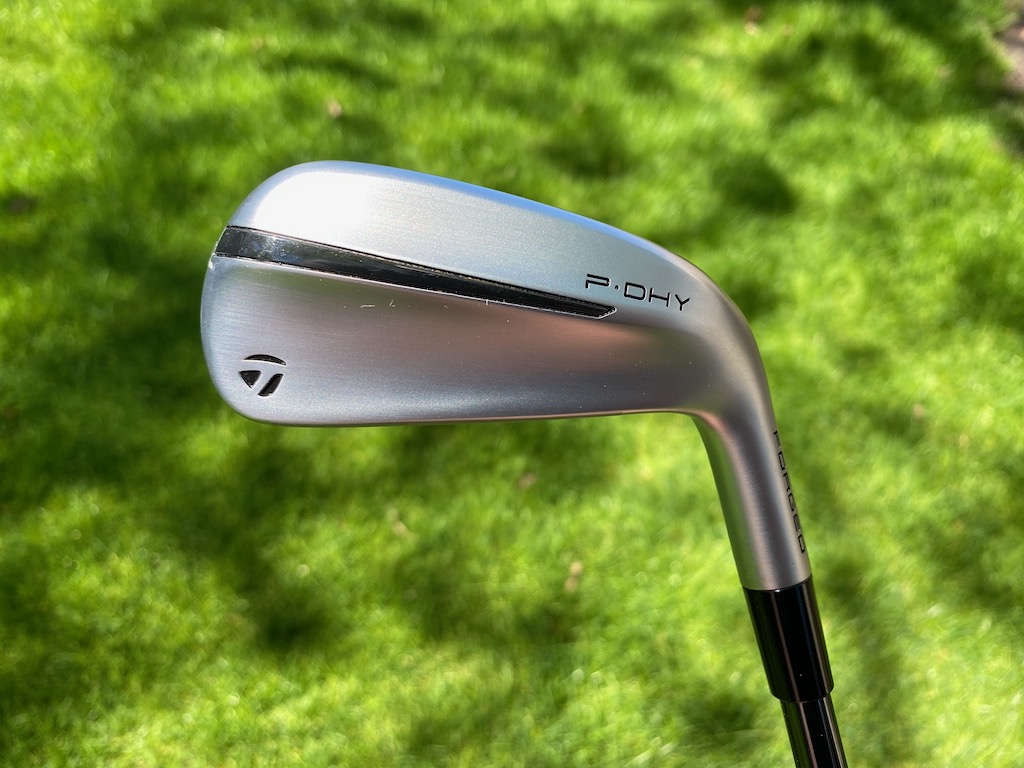



Club Junkie’s take
Golfers who feel like they are missing something at the top of the bag could find the PUDI or PDHY a great option. The look of the PUDI should fit the most discerning eye with a more compact look, less offset, and a thinner topline. If you want a little more confidence looking down the P-DHY will be slightly larger while still being a good-looking utility iron.
For being small packages both models pack a pretty good punch with fast ball speeds, even off-center. The feel is soft and you get a solid feel of the ball compressing off the face when you strike it well. Your ears are greeted with a nice heavy thud as the ball and club come together. The PDHY will launch a little higher for players who need it while the PUDI offers a more penetrating ball flight. Both utility irons could be the cure for an open spot in the top end of the bag.
PUDI, PDHY, or Rescue?
TaylorMade offers the following notes to assist golfers in filling out their bags:
- PUDI has mid-CG right behind the center face to create a more penetrating mid-to-low ball flight
- PDHY has a lower center of gravity to produce an easier-to-launch mid-to-high ball flight.
- Both PUDI and PDHY are lower-flying than the company’s hybrid/Rescue clubs.
- PUDI is more forgiving than P790.
- PDHY is the most forgiving iron in the entire TaylorMade iron family
Pricing, specs, and availability
Price: $249.99
At retail: Now
Stock shafts: UST Mamiya’s Recoil DART (105 X, 90 S and 75 R – only in PDHY)
Stock grip: Golf Pride’s ZGrip (black/grey)
PUDI lofts: 2-17°, 3-20°, 4-22° in both left and right-handed
PDHY lofts: 2-18°, 3-20° and 4-22° in both left and right-handed
- LIKE15
- LEGIT5
- WOW4
- LOL4
- IDHT1
- FLOP2
- OB3
- SHANK5
-

 19th Hole2 weeks ago
19th Hole2 weeks agoJustin Thomas on the equipment choice of Scottie Scheffler that he thinks is ‘weird’
-

 19th Hole2 weeks ago
19th Hole2 weeks ago‘Absolutely crazy’ – Major champ lays into Patrick Cantlay over his decision on final hole of RBC Heritage
-

 19th Hole3 weeks ago
19th Hole3 weeks agoTwo star names reportedly blanked Jon Rahm all week at the Masters
-

 19th Hole3 weeks ago
19th Hole3 weeks agoReport: LIV Golf identifies latest star name they hope to sign to breakaway tour
-

 19th Hole3 weeks ago
19th Hole3 weeks agoNeal Shipley presser ends in awkward fashion after reporter claims Tiger handed him note on 8th fairway
-

 19th Hole3 weeks ago
19th Hole3 weeks agoBrandel Chamblee has ‘no doubt’ who started the McIlroy/LIV rumor and why
-

 19th Hole1 week ago
19th Hole1 week agoLET pro gives detailed financial breakdown of first week on tour…and the net result may shock you
-

 Equipment3 weeks ago
Equipment3 weeks agoJason Day on his recent switch into Srixon ZX5 and ZX7 Mk II irons









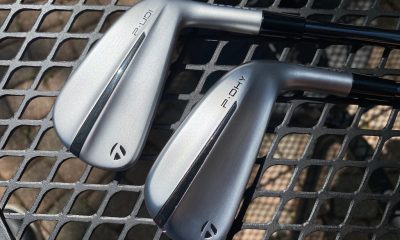















Baba Booey
May 7, 2019 at 12:12 pm
I like the Old School reference. You’re my boy Blue!
Scotty Cameron
Jan 30, 2018 at 11:11 am
Tiger used a NEWPORT TEI3 (sole stamp), not a NP2, to win the Masters in 97. And this was written by the Editor and Chief of Golfwrx? SMH
Whistle Dick
May 7, 2019 at 12:22 pm
How about the parallel groove rule? Didn’t TaylorMade put grooves on the soles of their irons and drivers? Love your work Scotty, big fan. Thanks! ????
Baba Booey
May 7, 2019 at 12:41 pm
Big fan Scotty, love your work. Doesn’t TaylorMade use parallel grooves on their irons and woods?
Joey5Picks
Jan 29, 2018 at 11:10 pm
Good Old School reference. “We’re going streaking!”
james
Jan 29, 2018 at 9:49 pm
That pistol grip is exactly the same as the one wilson used on the TPA, it was a great grip then and is now but there’s no need for that lame story!
Robert Parsons
Jan 31, 2018 at 11:49 am
Don’t let the facts get in the way of a good fairytale!
Benny
Jan 29, 2018 at 6:30 pm
Or when he made Tigers NP2. The weight was slightly over and Scotty drilled a couple holes both on the heel and the cavity. He knew they would rust as he drilled past the finish and into the carbon. So he filled the holes amd paintfil with Red printers ink. This all started the Tour Dot…
DaveyD
Jan 29, 2018 at 6:24 pm
I get a kick out of those “off the cuff” stories.
Ben
Jan 29, 2018 at 5:08 pm
Just another Karsten putter knock-off with minor features that have little to no effect on putting stroke or ball impact. It’s all about name, graphics and bought reputation. Gearheads love their fancy toys and Cameron dishes it out to the full.
WhistleDick
May 7, 2019 at 12:46 pm
Rack Him
Bettinardi
May 7, 2019 at 12:47 pm
Rack Him
Andrew
Jan 29, 2018 at 3:39 pm
Thanks. This is WRX material, not some silly videos in a golf dome.